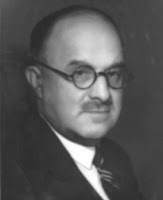
A fatal case of thrombotic thrombocytopenic purpura (TTP) is described here. A 27-year-old man presented with thrombocytopenia, facial purpura, arthritis and daily fever for two months. A week before death, he was admitted to a hospital and treated, including plasma infusion and plasma exchange. However, he died of pneumonia, evidence of cardiac tamponade and pancreatitis.
At autopsy, there were mild jaundice, cerebral edema, mediastinal hematoma, hydrothorax and pulmonary condensation, splenic infarction, hemoperitoneum and hemorrhagic pancreatitis. Microscopically, disseminated microvascular hyaline platelet thrombi were prevalent in terminal arterioles and capillaries of the heart and kidneys, brain, spleen (splenic infarction) and pancreas (pancreatitis). In several organs, megakaryocytes were distributed (increased thrombocytopoiesis).
At autopsy, there were mild jaundice, cerebral edema, mediastinal hematoma, hydrothorax and pulmonary condensation, splenic infarction, hemoperitoneum and hemorrhagic pancreatitis. Microscopically, disseminated microvascular hyaline platelet thrombi were prevalent in terminal arterioles and capillaries of the heart and kidneys, brain, spleen (splenic infarction) and pancreas (pancreatitis). In several organs, megakaryocytes were distributed (increased thrombocytopoiesis).








MOSCHCOWITZ'S DISEASE
Thrombotic thrombocytopenic purpura (TTP) is also known as Moschcowitz's Disease.
ABOUT THE EPONYM: ELI MOSCHCOWITZ, M.D.
Dr. Eli Moschcowitz, of New York City, died on February 23, 1964, at the age of eighty-two. Dr. Moschcowitz graduated from Columbia University College of Physicians and Surgeons in 1900. He was a consulting physician at Beth-El and the Mount Sinai Hospitals and a consulting pathologist at Beth Israel Hospital. In 1925, he described a vascular disease involving blood clots which is named Moschcowitz's Disease after him (An acute febrile pleiochromic anemia with hyaline thrombosis of terminal arterioles and capillaries: An undescribed disease.Archives of Internal Medicine, Chicago, 1925, 36: 89). In 1945, Dr. Moschcowitz retired as Director of the Mount Sinai Hospital and as Professor of Clinical Medicine at Columbia University College of Physicians and Surgeons. He was an Associate Member of the Medical Library Association, a Diplomate of the American Board of Internal Medicine, and a member of numerous societies, including the New York Academy of Medicine and the American Association of Pathologists
and Bacteriologists. Reference: Bull Med Libr Assoc. 1965 April; 53(2): 302. (http://www.ncbi.nlm.nih.gov/pmc/articles/PMC198274/).
Photo: http://www.ttpnetwork.org.uk/WhatIsTTP.asp
Thrombotic thrombocytopenic purpura (TTP) is also known as Moschcowitz's Disease.
ABOUT THE EPONYM: ELI MOSCHCOWITZ, M.D.
Dr. Eli Moschcowitz, of New York City, died on February 23, 1964, at the age of eighty-two. Dr. Moschcowitz graduated from Columbia University College of Physicians and Surgeons in 1900. He was a consulting physician at Beth-El and the Mount Sinai Hospitals and a consulting pathologist at Beth Israel Hospital. In 1925, he described a vascular disease involving blood clots which is named Moschcowitz's Disease after him (An acute febrile pleiochromic anemia with hyaline thrombosis of terminal arterioles and capillaries: An undescribed disease.Archives of Internal Medicine, Chicago, 1925, 36: 89). In 1945, Dr. Moschcowitz retired as Director of the Mount Sinai Hospital and as Professor of Clinical Medicine at Columbia University College of Physicians and Surgeons. He was an Associate Member of the Medical Library Association, a Diplomate of the American Board of Internal Medicine, and a member of numerous societies, including the New York Academy of Medicine and the American Association of Pathologists
and Bacteriologists. Reference: Bull Med Libr Assoc. 1965 April; 53(2): 302. (http://www.ncbi.nlm.nih.gov/pmc/articles/PMC198274/).
Photo: http://www.ttpnetwork.org.uk/WhatIsTTP.asp
No comments:
Post a Comment